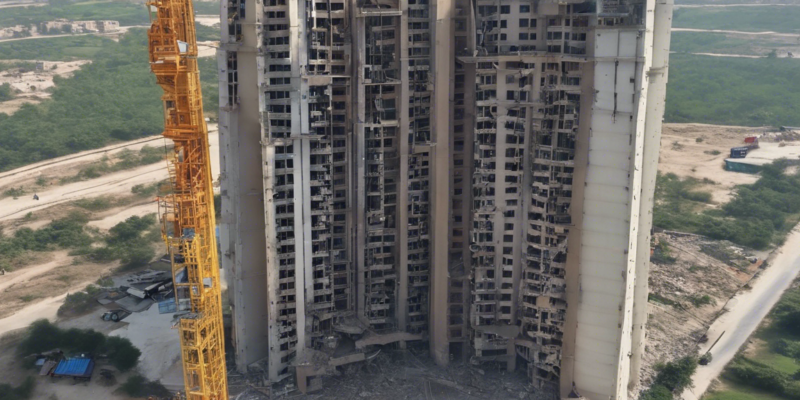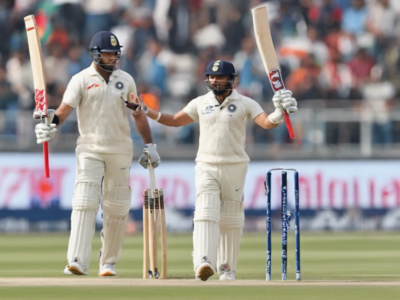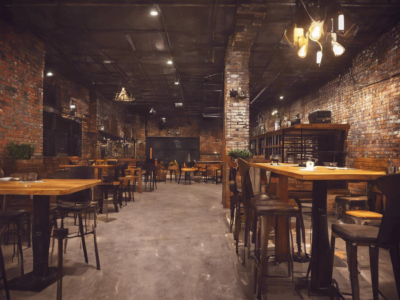On the tragic incident that unfolded at Amrapali Silicon City in Greater Noida, where a horrifying lift accident led to the loss of two lives and left several others injured, it is essential to delve into the factors that contributed to this unfortunate event. Lift accidents are not only distressing but also raise serious questions about the safety measures in place to prevent such incidents. In this article, we will explore the specifics of the Amrapali Greater Noida lift accident, analyze the possible causes, and discuss the importance of lift safety measures in residential and commercial buildings.
Understanding the Amrapali Greater Noida Lift Accident
The incident at Amrapali Silicon City, a residential complex in Greater Noida, took place on [date], when a lift suddenly collapsed from the 12th floor to the ground level. This catastrophic event resulted in the tragic deaths of two individuals and caused injuries to several others who were inside the lift at the time of the accident. The suddenness and severity of the incident sent shockwaves through the community and raised concerns about the safety standards in place within the building.
Investigating the Causes of the Lift Accident
While investigations into the Amrapali Greater Noida lift accident are ongoing, several factors could have contributed to this tragic event. Some potential causes that are often associated with lift accidents include:
-
Lack of Regular Maintenance: Lifts require regular maintenance to ensure they are in optimal working condition. Neglecting maintenance schedules can lead to mechanical failures, which may result in accidents like the one at Amrapali Silicon City.
-
Overloading: Exceeding the maximum weight capacity of a lift is a common cause of accidents. If the lift was carrying more individuals or weight than it was designed to handle, it could have put undue stress on the elevator system, leading to a catastrophic failure.
-
Poor Installation: In some cases, lift accidents occur due to faulty installation or substandard components. If the lift at Amrapali Silicon City was not installed properly or if inferior quality parts were used, it could have contributed to the accident.
-
Malfunctioning Safety Features: Lifts are equipped with various safety features, such as emergency brakes and sensors, to prevent accidents. If any of these safety mechanisms failed to function correctly at the time of the accident, it could have resulted in the tragic outcome.
The Importance of Lift Safety Measures
The Amrapali Greater Noida lift accident serves as a grim reminder of the critical importance of implementing and maintaining robust safety measures in buildings with lifts. Property owners, management companies, and maintenance personnel must prioritize the following safety measures to prevent similar incidents:
-
Regular Inspections and Maintenance: Lifts should undergo routine inspections and maintenance by certified professionals to ensure they are safe for use. Any issues or defects should be addressed promptly to prevent accidents.
-
Compliance with Safety Standards: Building owners must adhere to local safety regulations and standards when installing and maintaining lifts. Non-compliance can put occupants at risk and lead to tragic accidents.
-
Employee Training: Personnel responsible for operating and maintaining lifts should receive adequate training on safety protocols, emergency procedures, and proper usage of the equipment. Well-trained staff can help prevent accidents and respond effectively in case of emergencies.
-
Emergency Preparedness: Buildings with lifts should have comprehensive emergency preparedness plans in place, including protocols for evacuating occupants safely in the event of a lift malfunction or accident.
-
Occupant Education: Residents and users of the building should also be educated on lift safety practices, such as avoiding overloading, refraining from forcing doors open, and following emergency instructions.
Frequently Asked Questions (FAQs)
- What should I do if I am in a lift during a power outage?
-
If you find yourself in a lift during a power outage, stay calm and use the emergency communication button to alert building security or maintenance. Avoid attempting to force the doors open or leaving the lift on your own.
-
How often should lifts be inspected for safety compliance?
-
Lifts should undergo regular inspections as per local regulations, typically ranging from monthly checks to annual comprehensive inspections by certified elevator inspectors.
-
Can overloading a lift cause accidents?
-
Overloading a lift can exceed its weight capacity and strain the elevator system, potentially leading to mechanical failures and accidents. It is crucial to adhere to the posted weight limits to prevent accidents.
-
Are there specific safety guidelines for children in lifts?
-
Children should always be accompanied by an adult in lifts and should be taught not to play with the buttons or doors. Parents should ensure that children stand away from the doors and hold the handrail during the ride.
-
What should be included in a building’s lift safety checklist?
- A comprehensive lift safety checklist should cover regular maintenance records, emergency communication procedures, proper signage, clear weight capacity limits, and compliance with safety regulations.
In conclusion, the tragedy at Amrapali Silicon City in Greater Noida underscores the critical need for stringent lift safety measures and proactive risk management in buildings with lifts. By prioritizing regular maintenance, compliance with safety standards, staff training, emergency preparedness, and occupant education, property owners and management companies can help prevent lift accidents and ensure the safety of all building occupants.









